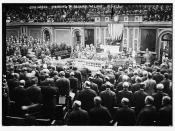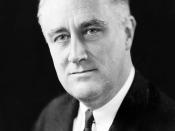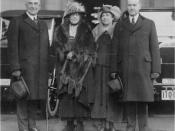30. President - Calvin Coolidge Term - August 3, 1923 to March 3, 1929 Coolidge set out to establish a working relationship with the leading members of the Harding administration, and he drew on many people for advice and help. The scandals of Harding's presidency, particularly the Teapot Dome oil affair, were coming to light, and Coolidge spent much of his time defending his party. His relations with Congress were unhappy, but he coped with scandal by prosecuting offenders, and, thanks to that, his integrity, and his self-possession, he retrieved public confidence in the White House.
He gained enough control over the Republican Party to be nominated for president in June 1924. Coolidge also gained enough of the people's confidence to be easily elected over his major opposition, John W. Davis (Democrat) and Robert M. La Follette (Progressive). When Coolidge entered the campaign with a series of "nonpolitical" statements late that summer, it was as the apostle of prosperity, economy, and respectability.
His opponents exhausted themselves with charges about the government's deficiencies, while the President received credit for his equanimity and the economic upturn. But 1924 was a sad year for Coolidge, for in July his younger son, Calvin, Jr., died of blood poisoning.
Coolidge was fairly successful in getting what he wanted during his full term as president. Heading the list were paring the national debt and reducing income taxes, so that there would be more money for consumer spending. Other measures included orderly growth of civil and military aviation, expansion of the services of the departments of Agriculture and Commerce, regulation of radio broadcasting, development of waterways, flood control, and encouragement of cooperative solutions to farm problems. Twice, he blocked enactment of the McNary-Haugen bill, which proposed to dump farm surpluses abroad in the hope of raising...


